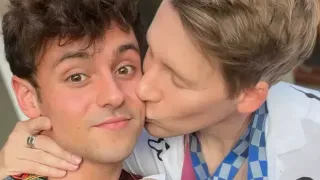December 28, 2015
Violence and Visibility
Steve Weinstein READ TIME: 5 MIN.
For many, the most disturbing trend of 2015 has been the surge in murders of transgender people. Headlines of major news organizations, bulletins and calls for action from advocacy groups, top elected officials and transgender men and women themselves have been sounding the alarm.
In a story from August, Time asked "why transgender people are being murdered at a historic rate." That same month, John Riley at EDGE print partner Metro Weekly wrote that "trans murder rates are out of control." And the Guardian just last month [November] confirmed "the numbers of transgender people in the United States hit a record high this year."
Minority leader Calif. Rep. Nancy Pelosi, the most powerful Democrat in the House of Representatives, noted that merely passing laws meting out additional punishments were useless in the face of "barriers in people's minds."
Mother Jones summed up the prevailing sentiment with a piece headlined "It's incredibly scary to be a transgender woman of color right now." But that same article pointed to one of the problems with maintaining that there has been a significant spike in trans murders this year.
There's no question that reported murders of trans people is up in 2015 - from 13 in all of 2014 to 21 as of mid-October of this year. Of course one such murder is one too many, but does a spike of eight murders constitute a crisis (albeit taking into account that the year is not yet over)?
"Certainly for murders, I am really, really aware of people being concerned about the numbers," Loree Cook-Daniels, the policy and program director of the national transgender advocacy group FORGE, told EDGE. But she worries that the huge spate of news coverage and reaction may be taking away from other, far more widespread - and hence urgent - problems of violence.
"In the trans community, people are saying the murders should be our top priority, when in reality most violence doesn't end up being murder," she said. In particular, she cites domestic violence as a far greater problem that may be getting short shrift by being overshadowed by more sensational murders.
"In the past, a number of murders would have been classified as domestic violence," she added. "It was the boyfriend they knew. Was that person killed because she was transgender? Or was it a fight that ended up being fatal?"
"Reliable data can be hard to come by," admits journalist Samantha Michaels. But while she concedes that federal agencies like the FBI have only recently begun keeping track of hate crimes against gender-nonconforming people, "those figures," she adds, "like the bureau's counting of hate crimes in general - seem to grossly understate the real situation."
That's true only if an obvious hate crime is not counted that way. The reality, however, is more problematic and subtle than advocates like Michaels would like to believe. As clearly spelled out by Cook-Daniels, domestic violence leading to murder is one possible such instance.
The problem is exacerbated by the kinds of lives transgender men and women live. Caitlyn Jenner may be a pathbreaker, but her existence is hardly typical of most trans people. Harassment at school, work (if they can find work), on the street, in public shelters, in medical facilities and from government workers at every level present the basic elements of subsistence and constant torment for a large segment of the transgender population.
Given a trans person's marginalized existence on the low rungs of society, the question facing law enforcement is whether a murder was directed at someone because she was a trans person (and the vast majority of murders involve trans women). Or was there another factor at work in the murder?
Unfortunately, life in the street, substandard city shelters, jails or overcrowded tenement flats can be violent for anyone.
"Trans people feel that if a trans person dies, it's transphobia," Cook-Daniels explained. "That's an oversimplification. It makes it harder for us to say, 'Don't stay with people who are violent.' We get pushback in the trans community."
For example, Cook-Daniels cited a trans sex worker who was negotiating with a trick that turned ugly and ultimately violent. "The police decided not to charge as a hate crime because it was a routine argument. So it didn't hit the federal statistics. But trans people knew about it."
The big differential that has made trans murders so much more visible, according to Cook-Daniels, is social media.
"The reason why we think murders are up is that they have been counted in social media in real time," she explained. "That never happened before. More people across the country are finding out about them and making them more public."
There is an interesting parallel argument being made about school bullying. LGBT advocates may wring their hands over the "epidemic" of such instances; in fact, such incidences have always gone on but were swept under the rug by parents or administrators, or were papered over in local media.
Similarly, people who hear about trans murders in local media or through other means - such as church organizations, social workers or neighbors - by posting on social media provide a documentation that is readily available to almost anyone in the world.
There's no question that as one of, if not the, most marginalized groups in America, trans people and their treatment at the hands of police presents problems that match, or overshadow, those in other minority communities.
In a comprehensive study, "Injustice at Every Turn," the National LGBTQ Task Force detailed the everyday indignities and injustices that are routine for many trans people. Among problems cited by the study:
� Harassment when a person's chosen gender doesn't match the information or photos on IDs.
� Police often target trans women for sex work, sometimes even just for walking down a street.
� Mistreatment dramatically increases for trans women of color.
� Street harassment in general.
In its own report on the situation, the Human Rights Campaign cited "revictimization by police" as presenting "the most significant barrier to decreasing anti-transgender violence in the United States." If a trans person doesn't believe that the police will help him or her, he or she is unlikely to seek their aid.
The very fact that such reports are being disseminated - that the media now regularly reports incidents of trans violence, and law enforcement, either from outside pressure or because of enlightened training procedures, is beginning to be more responsive - could in fact make 2015 a year of progress.
This may fly in the face of the many groups insisting that there is a crisis that must be addressed. In March, transactivists gathered in Chicago to address the murders. EDGE's Melloy noted that activists were petitioning the White House to launch a formal investigation into the causes of the phenomenon.
Minn. Sen. Al Franken sent a stern letter to the U.S. attorney general and FBI director to become more proactive in leaning on local law enforcement agencies to ensure that crimes are reported and vigorously investigated. There have been many other such responses.
So it's worth noting that, in a July story from South Florida Gay News that was re-published at EDGE, at least a few prominent trans advocates are taking a longer view.
"Finally trans deaths are being reported as trans deaths in the media," noted Osman Ahmed, research and education coordinator for the National Coalition of Anti-Violence Programs. Echoing Cook-Daniels, he cited social media as an important factor in making trans deaths count.






